Choosing the perfect Hobie fishing kayak can be an exciting but also confusing time for many prospective buyers.
This comprehensive guide is dedicated to helping you navigate the Hobie kayak range, ensuring that you find not just a good kayak, but the right one for your specific needs, preferences, and budget.
Whether you’re a Hobie veteran or new to the sport of kayak angling, this guide will get you a step closer to finding your perfect kayak. Let’s dive in!
Setting a budget
One of the biggest factors to consider when deciding which Hobie fishing kayak is best for you is your budget. Hobie fishing kayaks range in price significantly from the entry-level Passport 10.5 to the top-of-the-range Pro Angler 14 with 360 drive, with many options in between.
As the models increase in price, so too typically does their size and list of standard features. It’s important to remember that a more expensive kayak doesn’t mean more fish or more fun. Find a kayak that suits your needs and budget by checking out our Hobie Fishing Kayak Buyer’s Guide.
Where features aren’t available as standard they can often be added as an optional upgrade, either at the time of purchase or later down the line. However, some kayak features like Hobie’s revolutionary 360 pedal drive are only available for specific models.
No matter which kayak you choose, you will likely need to allocate at least some of your budget to kayak accessories, particularly if fishing is your goal. Whether it’s a cart to get the kayak to and from the water, a rod holder or a storage upgrade, accessorising your kayak is the best way to personalise it to your specific user needs.

Where and how do you fish?
Kayaks are a versatile fishing platform which are technically capable of almost any fishing scenario you could throw at them. Hobie has designed its fishing kayak lineup so that some models are more suited to certain types of fishing and fishing grounds than others. We’ve developed this three-step process to help our customers hone in on what their kayak fishing needs are.
Step one is to determine what type of waters you will do the majority of your fishing in. A kayak for offshore work will necessitate a different design from a kayak intended for sight fishing in rivers and estuaries.
For example, the Lynx is an amazing platform for chasing bass or fly fishing, whereas the Revolution 13 is a pure-bred offshore fishing kayak.
Step two is to think about the species of fish you’re chasing and the type of fishing that requires. Will you want or need to bring along a lot of gear? Will you need good standing stability? Will you prefer manoeuvrability or is covering distance more important?
Step three is to think about how you like to fish. Are you often travelling with your kayak? Are you fishing recreationally or looking to enter tournaments? Are you looking for a single or a tandem?
For example, a tournament angler will often prefer the storage, carrying capacity and speed of kayaks like the Pro Angler and Outback, whereas someone who likes to explore and fish new waterways might prefer the lightweight versatility of a Compass.
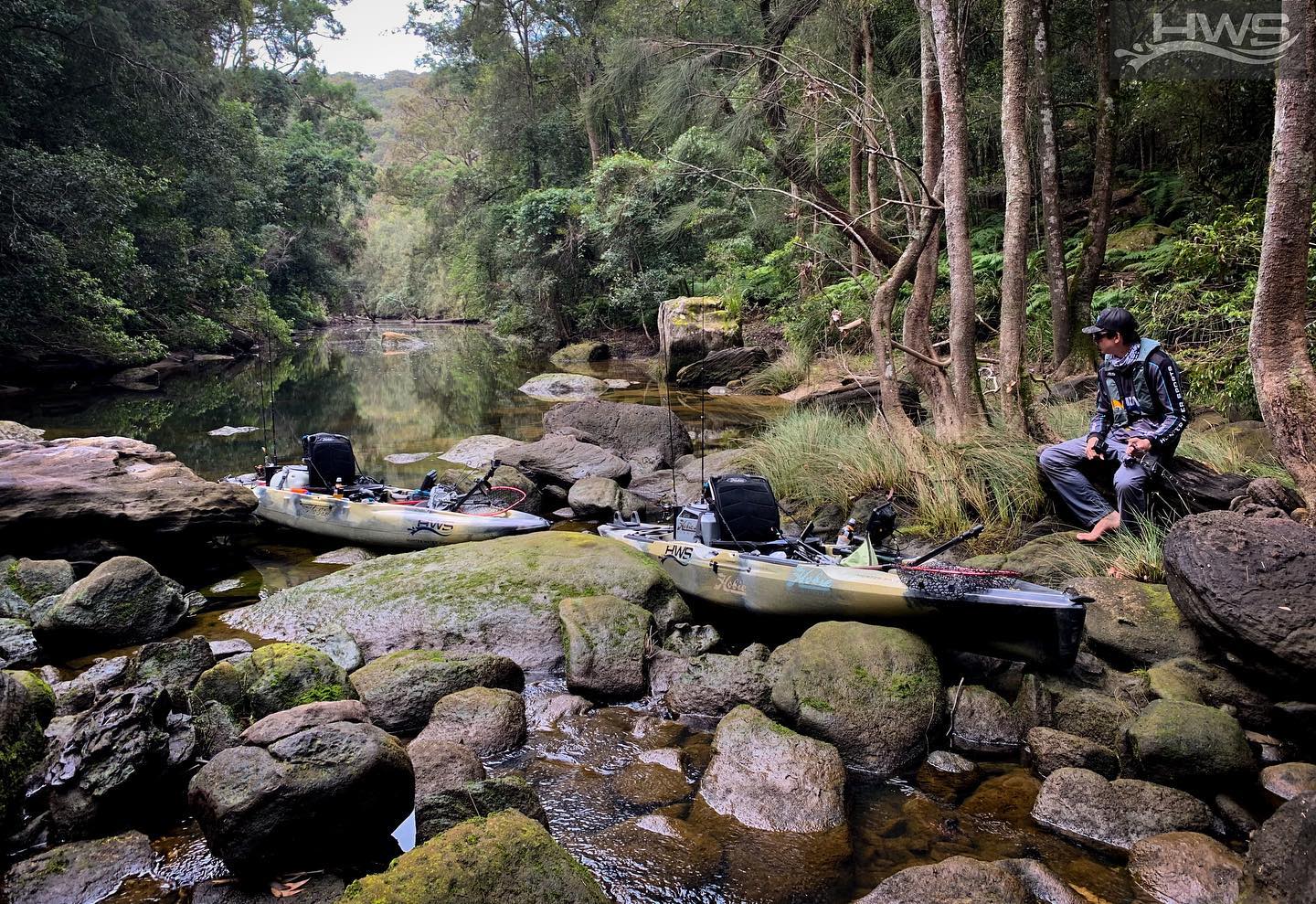
Size Matters
Size is a critical factor when deciding which Hobie kayak is the one for you. The length, beam (width) and weight of a kayak will determine how it performs, how you use it, and critically how you transport it to and from the water.
Length
A key rule to remember when choosing a kayak is that longer waterlines equal higher cruising speeds. No matter how fast you pedal a Passport 10.5, it has no chance of keeping up with the longer models in Hobie’s lineup. So if speed or covering distance is important, a longer kayak should be on your wish list.
A kayak’s length also plays a big part in how it handles swell and chop. A longer length will help to minimise hobby-horsing, which can greatly reduce water taken over the bow, keeping the kayak, its user and their gear dryer.
It goes without saying, but a longer kayak will also typically be more comfortable for taller users. It will also increase the carrying capacity and can positively contribute to stability. In general, more length is better, until it comes time to transport and store your kayak. More on that below.
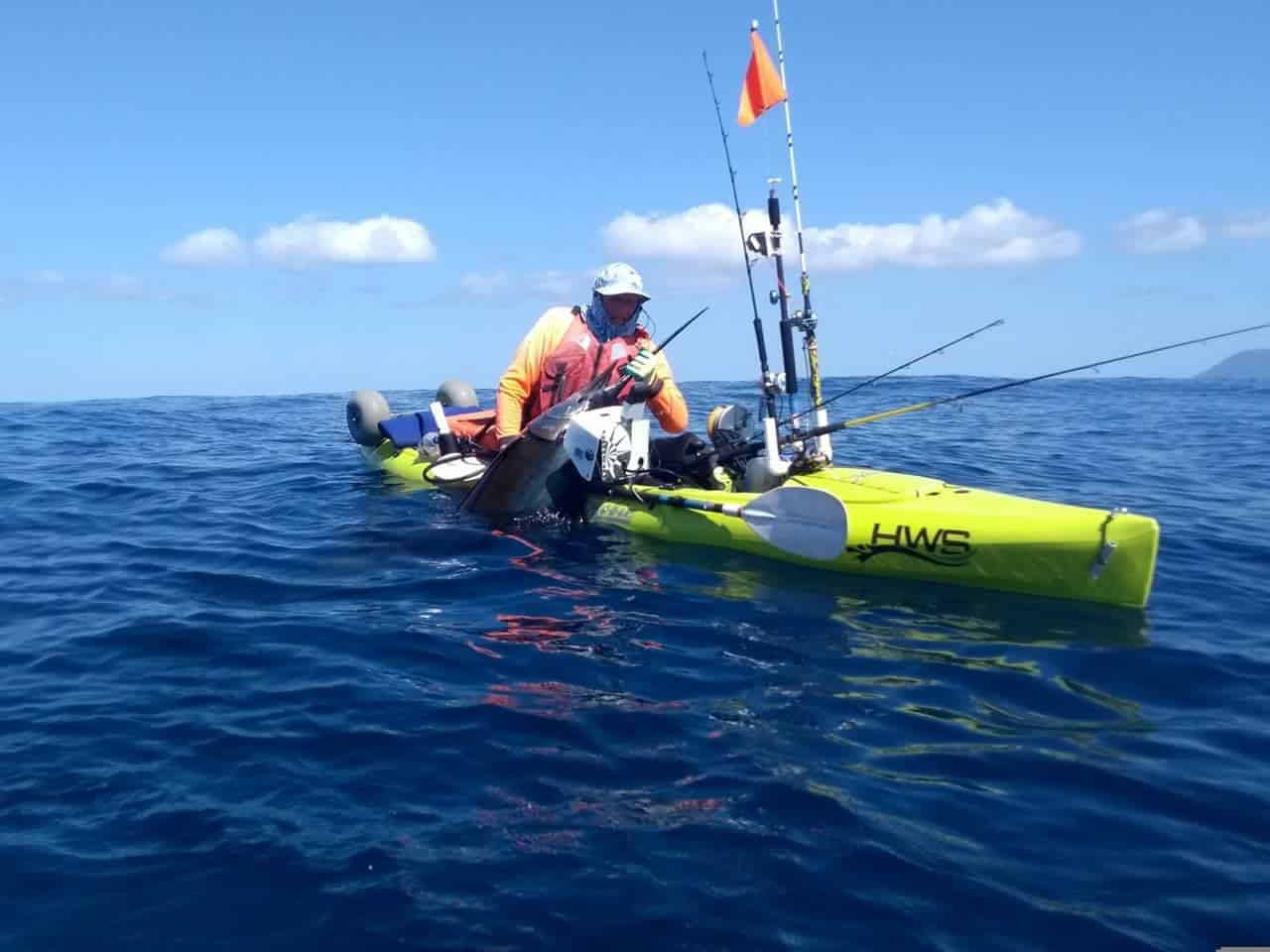
Beam
The beam or width of the kayak hull is key for determining stability, especially for standing use. As a general rule, the wider the kayak is in the area you will be standing, the more stable it will be.
An example of this beam-to-stability rule can be found by comparing the Compass and Outback models. Despite both carrying the same maximum beam, the Outback carries its beam further forward into the cockpit, making it much more stable than the Compass for standing use.
A common misconception is that a wider kayak will be slower. This is only true if the beam is disproportionate to the kayak’s length, something Hobie’s designers have successfully avoided. There’s no better evidence for this than the Pro Angler 14. As the widest kayak in the Hobie lineup, the PA 14 is still among the fastest thanks to its long waterline.
As with length, a kayak’s beam can also create a more comfortable cockpit for larger users. Beam also greatly increases carrying capacity (especially in the rear) for those that like to bring a lot of gear.

Weight
A kayak’s weight might be the most crucial size factor of them all. In general, Hobie’s kayaks offer excellent size-to-weight ratios. However, as the length and beam increase, inevitably so too does the weight.
A kayak’s weight and even the additional weight of the user and gear will have minimal impact on its performance as long as it is trimmed properly (dragging the back end will slow you down). The biggest impact of weight is how you transport your kayak.
The larger kayaks in Hobie’s lineup will require significantly more effort and time to load and unload from your car or trailer. Depending on your physical ability, you may require a helping hand for the loading and unloading process.
Consider how you will transport your kayak. Will you car-top and is your vehicle suitable for the kayak you’re looking at? Have a good think about how weight impacts ease of use too. I can tell you from experience as an owner of both a Pro Angler 14 and a Lynx, that a lighter easier to transport kayak will get used far more often.
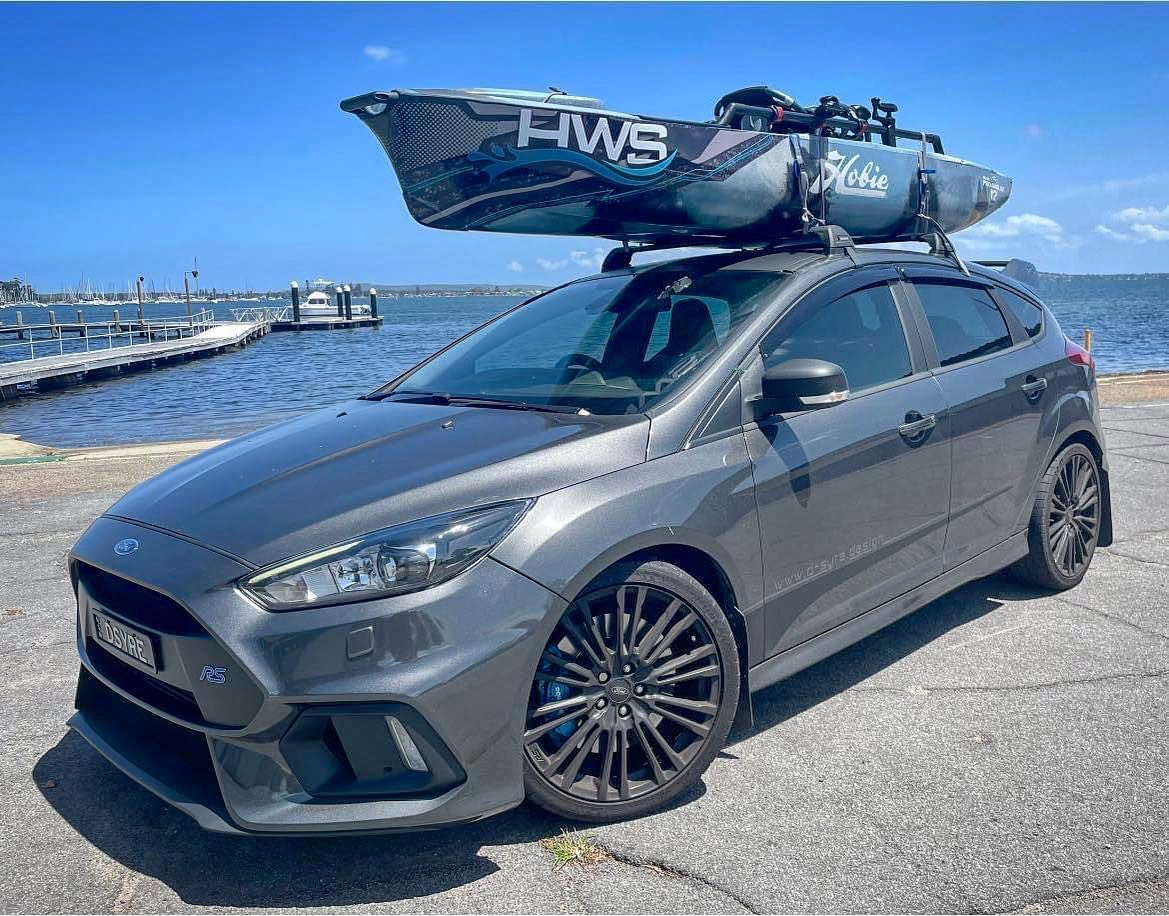
The MirageDrive kayak pedal drive
Hobie offers its legendary MirageDrive kayak pedal drive in three variants; The MirageDrive GT (MD-GT), the MirageDrive 180 (MD-180) and the MirageDrive 360 (MD-360). All Hobie’s current model MirageDrives now come with their patented kick-up fin technology with options for standard or Turbo-sized fins depending on your needs.
Note: If your Hobie dealer has old stock or you’re buying second-hand, the MirageDrive may not have kick-up fin technology. Be sure to double-check the drive if this feature is important to you.
Which of Hobie’s pedal drives is right for you comes back to two of the criteria mentioned above; Price and where/how you fish. The biggest difference between each drive is the manoeuvrability they offer. However, this maneuverability comes with a price increase while also increasing the complexity of the drive and in turn its maintenance needs. To help weigh the pros and cons of each drive we’ve provided details on each below.
MirageDrive GT
The MirageDrive GT (Glide Technology) provides smooth propulsion in a proven, time-tested package. This single-direction (forward only) drive may require the occasional use of a paddle for reversing but is unbeatable for reliability and requires far less maintenance than the MD-180 or MD-360 drives.
- Good for open-water fishing where reverse propulsion is rarely needed
- Kick-up fin technology. Be careful if you’re buying older stock or second-hand as they haven’t always had this tech.
- The most cost-effective MirageDrive
- Upgradable to Turbo fins
- Upgradable to MirageDrive 180
The MirageDrive GT with kick-up fins comes standard on all current model Mirage Passport 10.5, Mirage Passport 12, Mirage iTrek 9 Ultralight, Mirage iTrek 11, Mirage iTrek 14 Duo and Mirage Fiesta kayaks.
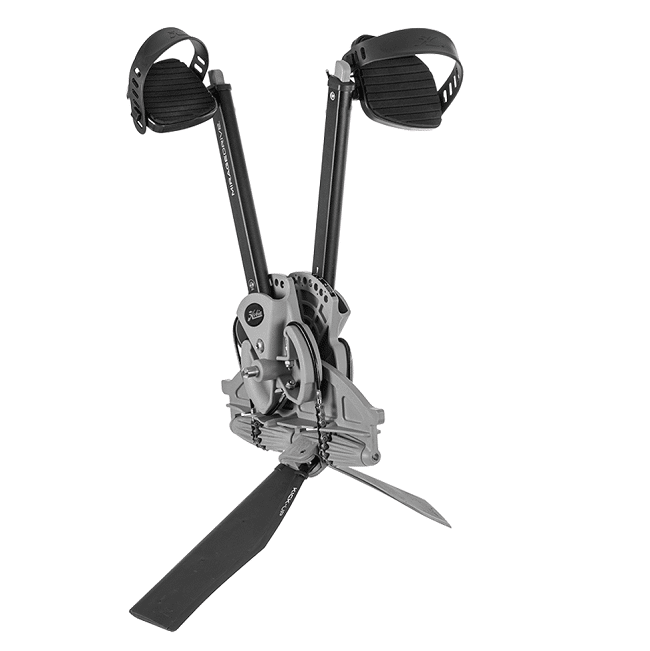
Note: If you’re considering upgrading your MD-GT drive to a MD-180 the best time to do so is when you purchase your new kayak. HWS offers upgrades at a reduced price when new, making it significantly more cost-effective. Speak to our team to find out more.
MirageDrive 180
The MirageDrive 180 produces full power in both forward and reverse offering upgraded maneuverability for your kayak. The MD180 drive shines when fishing around structure and shallow waters, allowing you to back the kayak and the fish out into open water. It’s also great for holding position in current or wind without the need to set an anchor.
- As a more complex drive, it will require more maintenance than the MD-GT but still far less than an MD-360 drive.
- Versatile for use in both open and confined waterways
- Kick-up fin technology. Be careful if you’re buying older stock or second-hand as they haven’t always had this tech.
- Upgradable to Turbo fins
The MirageDrive 180 with kick-up fins comes standard on all current model Mirage Outback, Mirage Lynx, Mirage Compass, Mirage Compass Duo, Mirage Revolution 11, Mirage Revolution 13, Mirage Oasis, Mirage Pro Angler 12 and Mirage Pro Angler 14 kayaks.

MirageDrive 360
Hobie has once again revolutionised the sport of kayak fishing with the introduction of the patented 360 MirageDrive. As the name suggests, the MD-360 can provide propulsion in any direction, opening up a whole new level of positioning for kayak anglers in confined waterways and around structure.
The 360 drive moves the pivot-point to the cockpit of the kayak rather than relying on the traditional stern-mounted rudder. This allows you to position the bow EXACTLY where you want it and reverse, track sideways, or at any angle and hold position while still providing powerful and efficient propulsion.
MY2024 + Pro Angler 360 Kayaks will receive the updated MD-360-XR drive that brings some nice quality-of-life improvements to the drive as Hobie continues to refine this cutting-edge system.
- Unparalleled maneuverability
- Kick-up fin technology with Turbo Fins as standard
- Hobie’s most complex pedal drive. Will require significantly more maintenance and cleaning. MD-360s are also more difficult and thus more expensive to service and repair.
- Most useful for enclosed waterways. Not advised if you’re primarily fishing open waters.
The Hobie MirageDrive 360 is available exclusively on the Mirage Pro Angler 12 – 360 and Mirage Pro Angler 14 – 360 fishing kayaks.

Hobie kayak construction materials
How your kayak is constructed and what it’s made from will determine a number of factors including price, durability, lifespan, and how easy it will be to make repairs and even mount accessories.
Hobie fishing kayaks are available in four unique construction types including Rotomolded Polyethylene, Thermoformed Polyethylene, Inflatable 550 Denier PVC and ACE-TEC Construction. Each construction method has its pros and cons so we’ve provided details on each below.
Rotomolded Polyethylene
Rotomolded Polyethylene is the most common construction method for Hobie kayaks. It involves the use of high-density polyethylene plastic, which is heated until it becomes a liquid. This is then poured into a mould and rotated at high speed until the inside is fully coated. Once it cools, it hardens into a very durable one-piece shell that’s immediately ready to be outfitted and launched into the water.
- Single-piece construction means no joins to worry about
- Durable and impact-resistant thanks to Polyethylene’s flexibility
- Proven longevity
- Relatively easy to repair, modify and add accessories
- Heavier than other construction methods
Thermoformed Polyethylene
Thermoforming is a process where a Polyethylene sheet is heated and vacuum-moulded into the required shape. Unlike rotomolded kayaks, thermoforming requires the hull and deck to be moulded separately, meaning a hull-deck joint is present along the length of the kayak. Hobie uses Thermoformed Polyethylene to construct its Passport 10.5 and Passport 12.0 fishing kayak models.
- Lighter than rotomoulded kayaks with a smoother finish and two-tone colour scheme
- More rigid than rotomolded kayaks for a small gain in performance.
- Highly cost-effective to manufacture which means a cheaper purchase price
- Easier to scratch and harder to repair than rotomolded kayaks
- Less durable and more prone to UV damage than rotomolded kayaks
ACE-TEC Construction
ACE-TEC is an ultra-lightweight construction method used to build the Hobie Lynx fishing kayak. Similar to surf-board construction, ACE-TEC features a watertight EPS foam core encased in layers of fibreglass with a Thermoformed plastic skin and EVA foam deck pad for comfort. The foam core provides buoyancy, while the surrounding materials provide strength, stiffness, and damage resistance.
- Lightest of all hard shell construction methods
- Excellent rigidity and buoyancy
- Easier to scratch and harder to repair than rotomolded kayaks
- No internal storage space
- More expensive to manufacture and purchase
Inflatable 550 Denier PVC
Hobie’s inflatable fishing kayak range consists of four models; the iTrek 9 Ultralight, the iTrek 11, the iTrek 14 Duo Tandem, and the four-person iTrek Fiesta. Constructed with 550 denier PVC hulls with diagonal drop stitched seams, these kayaks are designed to inflate to 10 PSI with most models featuring multiple chambers (iTrek 9 is a single chamber).
- Lightest and easiest to transport and store of all Hobie fishing kayaks
- Easy to patch and repair
- Highly durable compared with other inflatable kayaks but will ultimately have a shorter lifespan than a hardshell kayak
- Harder to mount kayak fishing accessories and no internal storage
- Needs to be inflated and deflated before and after each use
- More expensive to manufacture and purchase
Summary
When choosing the right Hobie fishing kayak for your needs the following are key criteria a potential buyer should consider including;
- Price – Ensure the kayak and any necessary upgrades and accessories fit within your budget.
- Where and how you fish – Think about how you will spend the majority of your time fishing. Shortlist kayaks that suit and rule out any that don’t.
- Kayak size – Consider length, width and weight and how the kayak’s proportions will affect performance, stability and how it’s transported.
- The MirageDrive – The beating heart of any Hobie fishing kayak is its pedal drive. Ensure you understand each drive’s pros and cons and find the drive that best suits your needs and budget.
- Kayak construction – Understand the differences in construction methods and what they have to offer.
Still need some assistance? Our friendly team are here to help for all your Hobie fishing kayak questions. If you’ve narrowed it down to a few models and still can’t decide, why not come for a no-obligation test drive on beautiful Lake Macquarie with HWS. We love getting out on the water for test drives.
With free installation of all accessories on new kayak purchases, free kayak delivery to greater Sydney, the Central Coast, Hunter and Port Stephens and unmatched after-sales service, HWS is Australia’s premiere authorised Hobie kayak dealer.
About the Author
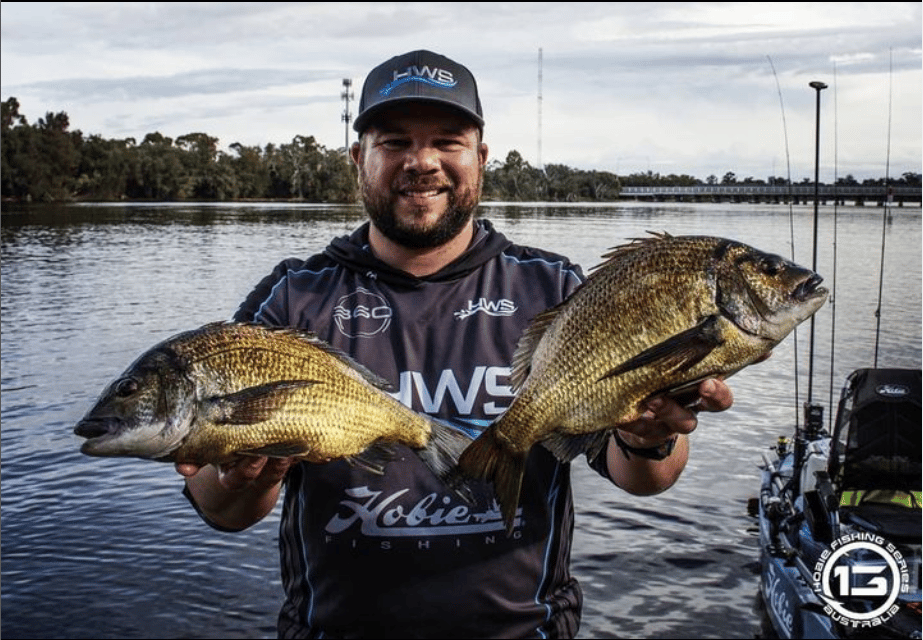
James Kilpatrick founded Hunter Water Sports (HWS) in 2012 and has been its managing director ever since. With over 18 years in the marine and fishing industry and a passion for kayak fishing both recreational and competitive, James is an expert in all things Hobie kayaks.
